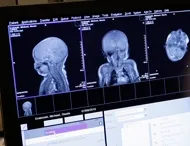
Medical technology is one of the foundations of the American health care system. It is home to dramatic technical advances. But it is one of the key contributors to rising health care costs, accounting for, according to one study, roughly half the increase in health spending. Issues such as these are the daily concern of John M. Capek, executive vice president, Medical Devices, at Abbott. He recently spoke at an event sponsored by Stanford GSB’s Program in Healthcare Innovation. He sat down afterward to answer questions. Below is an edited transcript of that conversation.
In your remarks, you said the main medical challenge facing society is “increasing access to health care technology.” But some people say the U.S. emphasizes technology too much, at the expense of low-tech preventive interactions with a primary care physician.
I used “technology” in a broader sense. Health care technologies aren’t just the expensive things that happen in hospitals. Even for something as simple as counting calories, we need to make technologies available to allow more people to manage their own health. But you’re right in that preventive medicine, or seeing a general practitioner in advance of needing urgent care, is part of the challenge we face.
“Outcomes research” is important now in medicine, but device makers are often portrayed by advocacy groups as opponents of outcomes research, using their lobbying power to get Congress or regulators to approve products that don’t prove to be cost-effective in clinical tests. Is that a fair criticism?
I certainly wouldn’t characterize the industry that way. Cost effectiveness is understanding the effect a technology will have on the outcome of the patient, as well as a consideration of the cost of that technology and how it compares to other options of varying effectiveness. Health care systems around the world are asking, “How much are we willing to pay to improve a patient’s life for one year?” The results of that discussion are going to be different in the United Kingdom, than here in the United States, than in some other country.
In this country, some in the political world would say that was “rationing,” and that we can’t do that.
One of the premises is that care should be a decision between patients and their physician. It’s only rationing if an individual physician isn’t allowed to give a patient the care that’s decided on. But we can tell physicians, “Here is the cost-effectiveness calculation, and here is the impact it will have for the population at large.” Then an individual physician can make the decision about what’s right for an individual patient.
Are you suggesting that even while a doctor might have a right to provide a therapy, if there isn’t good evidence for it, then society, either through taxes or insurance, shouldn’t have to pay for it?
People are going to have to begin thinking about situations like that.
Another big topic now in medicine is “pricing transparency,” the ability of patients to see in advance what treatment will cost them. In fact, there are many Silicon Valley startups in this field. Your thoughts?
Price transparency might tell me it is more expensive to receive a certain therapy at Hospital A compared to Hospital B. But you also have to take into account why the prices are different. It might involve the size of the hospital, or whether or not it’s a teaching institution. A structure that allows price transparency can be created, but there needs to be other information available to assist in its appropriate interpretation.
Are health care devices in the U.S. regulated too much? Too little? Just the right amount?
The biggest challenge isn’t the amount of regulation; it’s when the regulation changes. A company will make a model based on a certain set of regulatory assumptions, and then make a business decision based on that model. The challenge is when things change. Clearly, things need to adapt to current information. But the real issue isn’t whether we should have more or less regulation. It’s whether the amount of regulation is predictable, whether it’s consistently applied, and whether the process is transparent.
How about our overall approach to regulation?
We have a requirement in the U.S. regulatory approval process to show not only safety but also efficacy. The fact that we are required to show efficacy may require us to follow more patients for a longer period of time than occurs in other countries. But I don’t think our regulatory system is fundamentally broken and in need of an overhaul. It’s a matter of evolving the system to improve transparency and to make things more predictable.
For media inquiries, visit the Newsroom.






